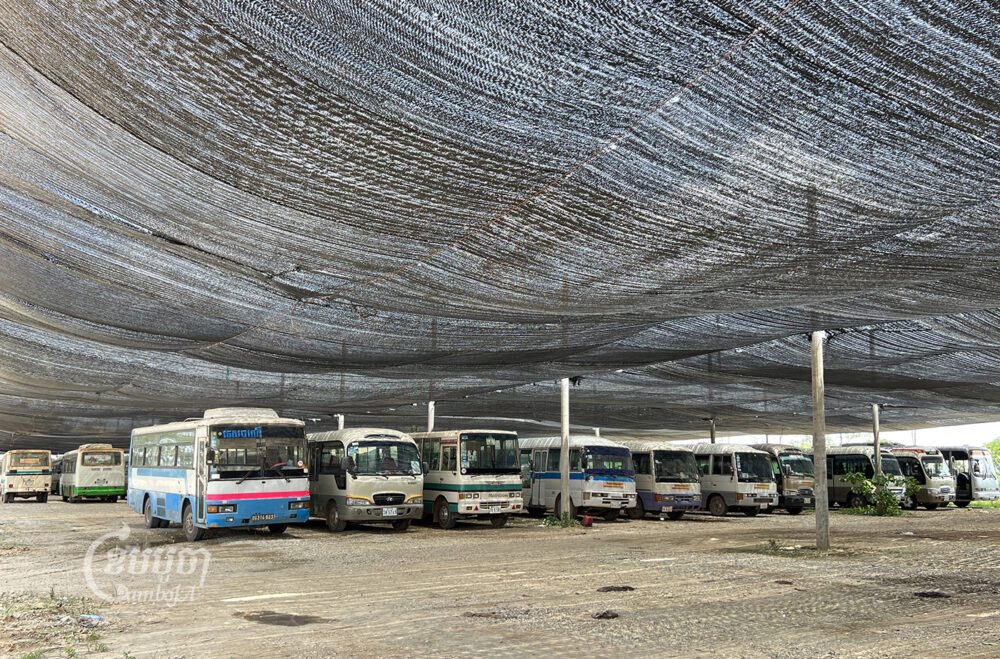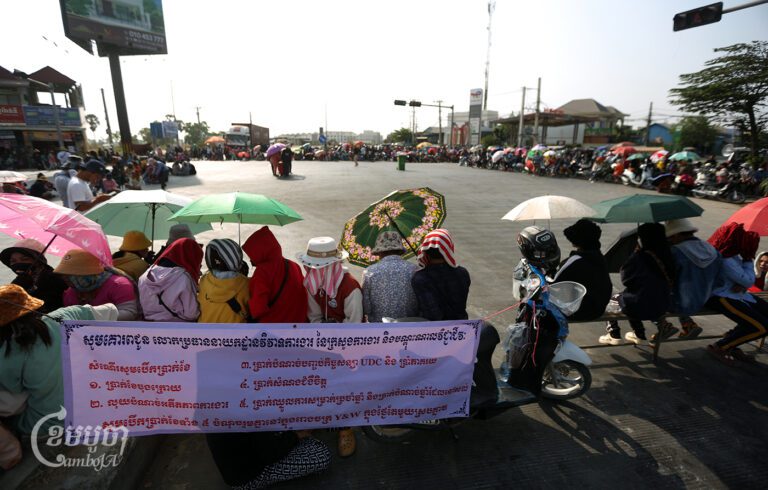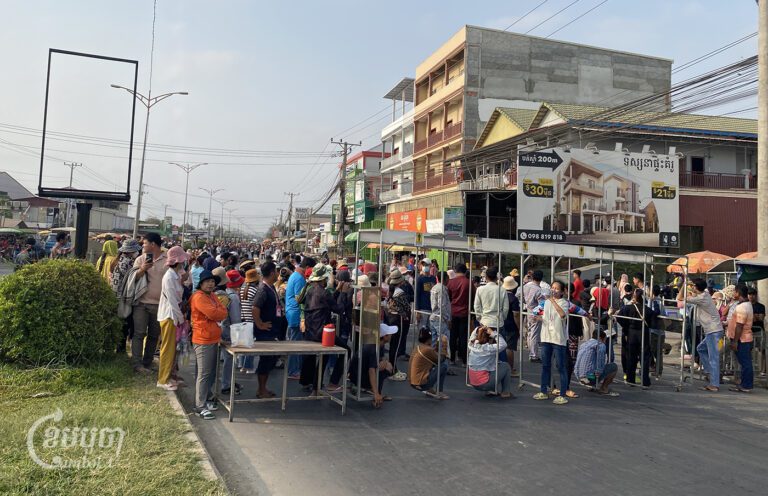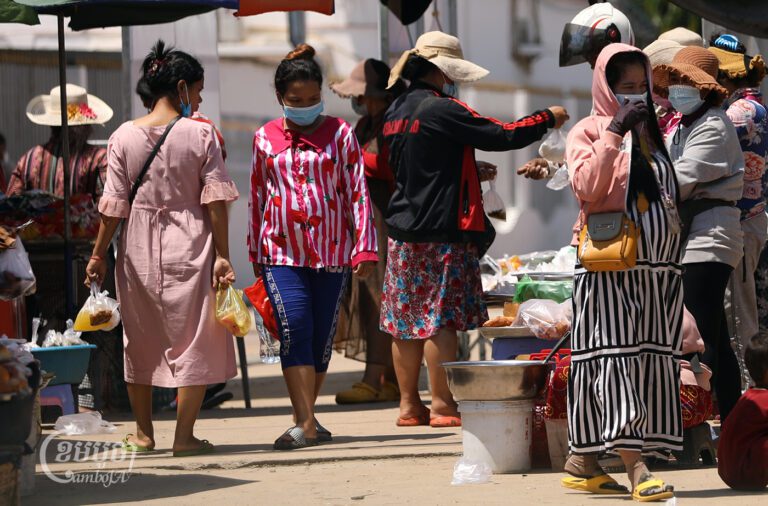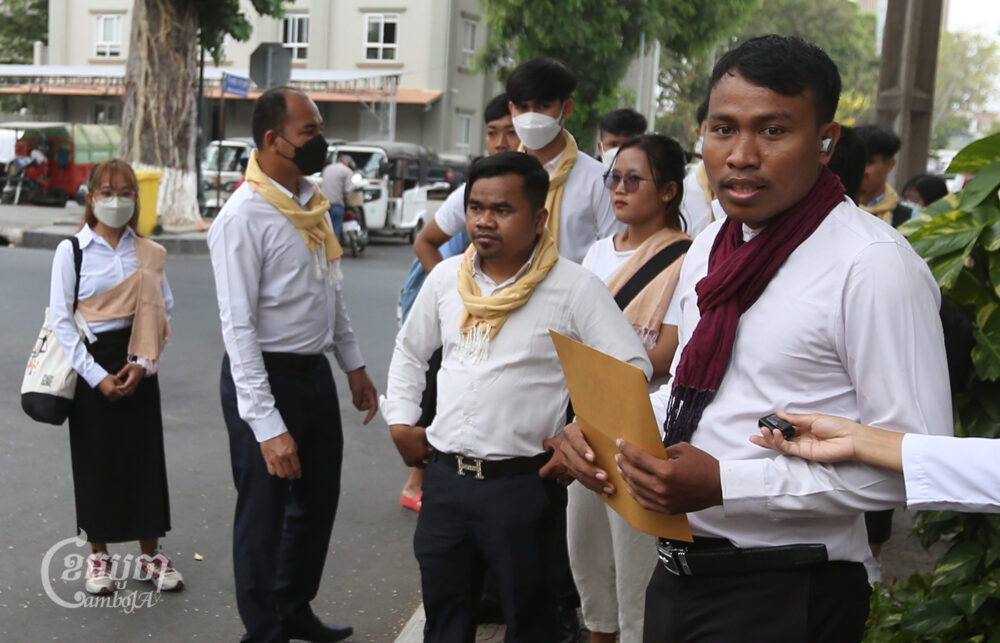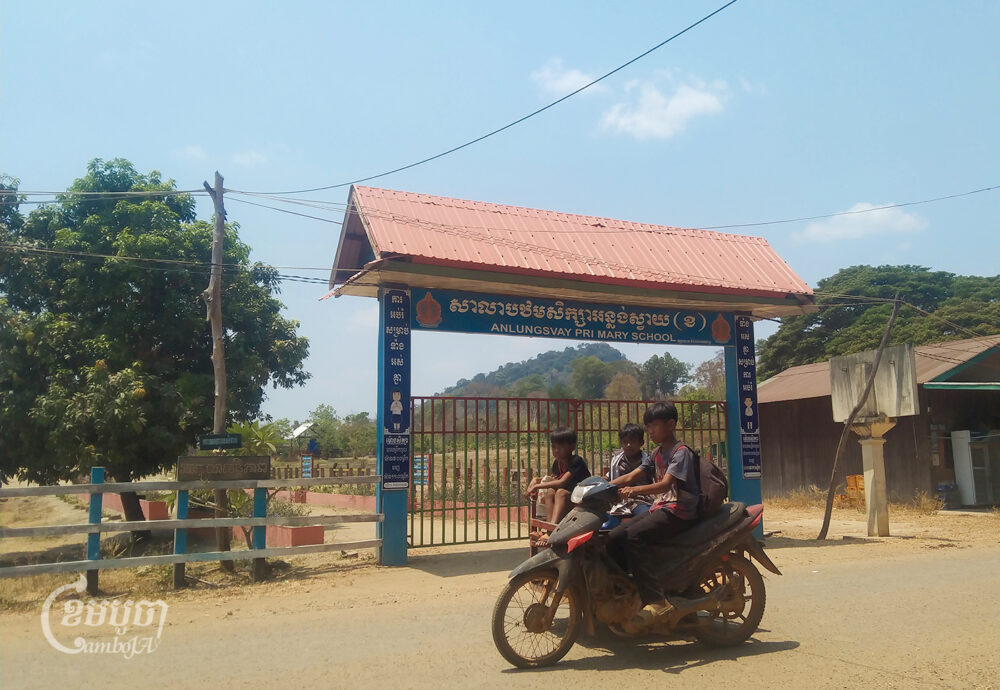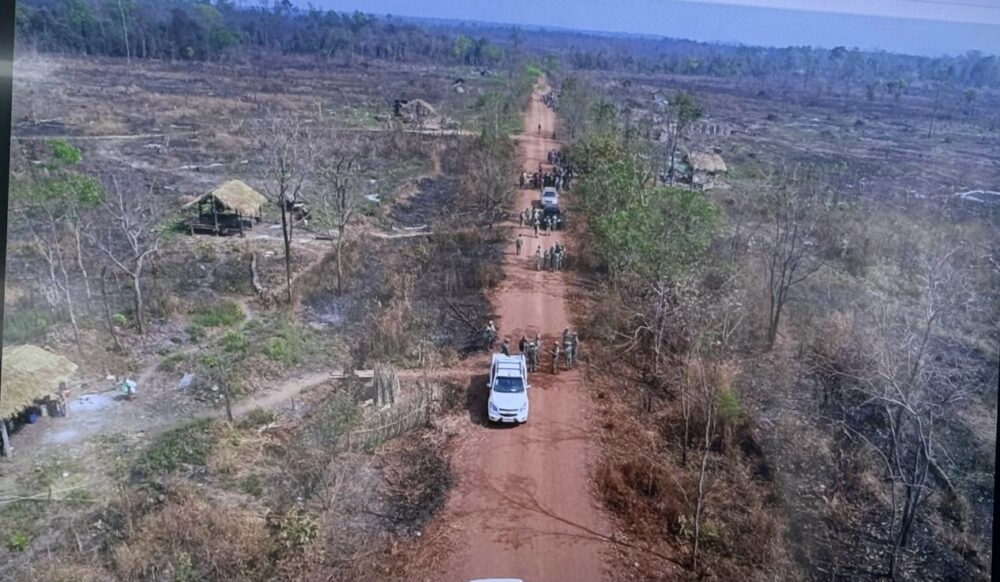An ongoing NGO and Labor Ministry initiative aims to make garment workers’ commute safer by shifting their daily transportation from typically flatbed trucks to enclosed buses, but the costs of the expensive upgrades are being placed on drivers.
Some drivers targeted by the initiative say they are being asked to take on overwhelming levels of debt to comply with the policy at a time when gasoline costs are rising and the garment sector is laying off tens of thousands of workers, diminishing drivers’ incomes.
Sor Vy has transported workers to garment factories in Kampong Cham province for more than 20 years. While he said he is happy to improve his passengers’ safety, he is still paying off the loan he needed to make the upgrade from truck to bus around 2018 and remains in a difficult financial situation.
“I am facing [money problems], everyone is facing that problem, and when the factory is not operating, bus drivers have no income to pay back the loan, we keep saving in the family but whenever it is time to pay the loan I am scared,” said Vy, 52. “Since changing vehicles, my wife used to have necklaces, but now all the necklaces have been sold.”
The Vehicle Replacement Project, launched in 2018 by the NGO AIP Foundation in partnership with the Labor Ministry, has been implemented with drivers servicing more than 1,000 factories across Kandal, Kampong Speu, Kampong Chhnang, Kampong Cham, Kampong Thom, Svay Rieng and Phnom Penh.
The initiative was designed to confront a significant problem facing workers. In 2020, 2,206 garment workers were victims of road accidents — an average of 183 per month — resulting in 30 deaths and 467 serious injuries, Southeast Asia Globe reported. Around half of Cambodia’s estimated 700,000 garment workers travel in large, typically flatbed trucks, according to a 2021 Center for Policy Studies survey.
Some drivers like Vy say the cost of complying with the policy requires them to take out significant loans even as the garment industry faces economic downturn and the cost of gas has skyrocketed.
Vy’s income from daily fare — around $500 to $600 monthly— goes almost entirely to paying back interest to the bank, he says.
“I borrowed nearly $20,000 from the bank and pay almost $500 per month for interest just to change from truck to bus,” Vy said.
His bus is also gas guzzling. While a truck required around 240 liters of gasoline per month, his new bus requires 390 liters per month.
Vy says drivers have fewer customers than before, while facing high interest rates from financial institutions, as over-indebtedness becomes an increasingly prevalent issue in Cambodia.
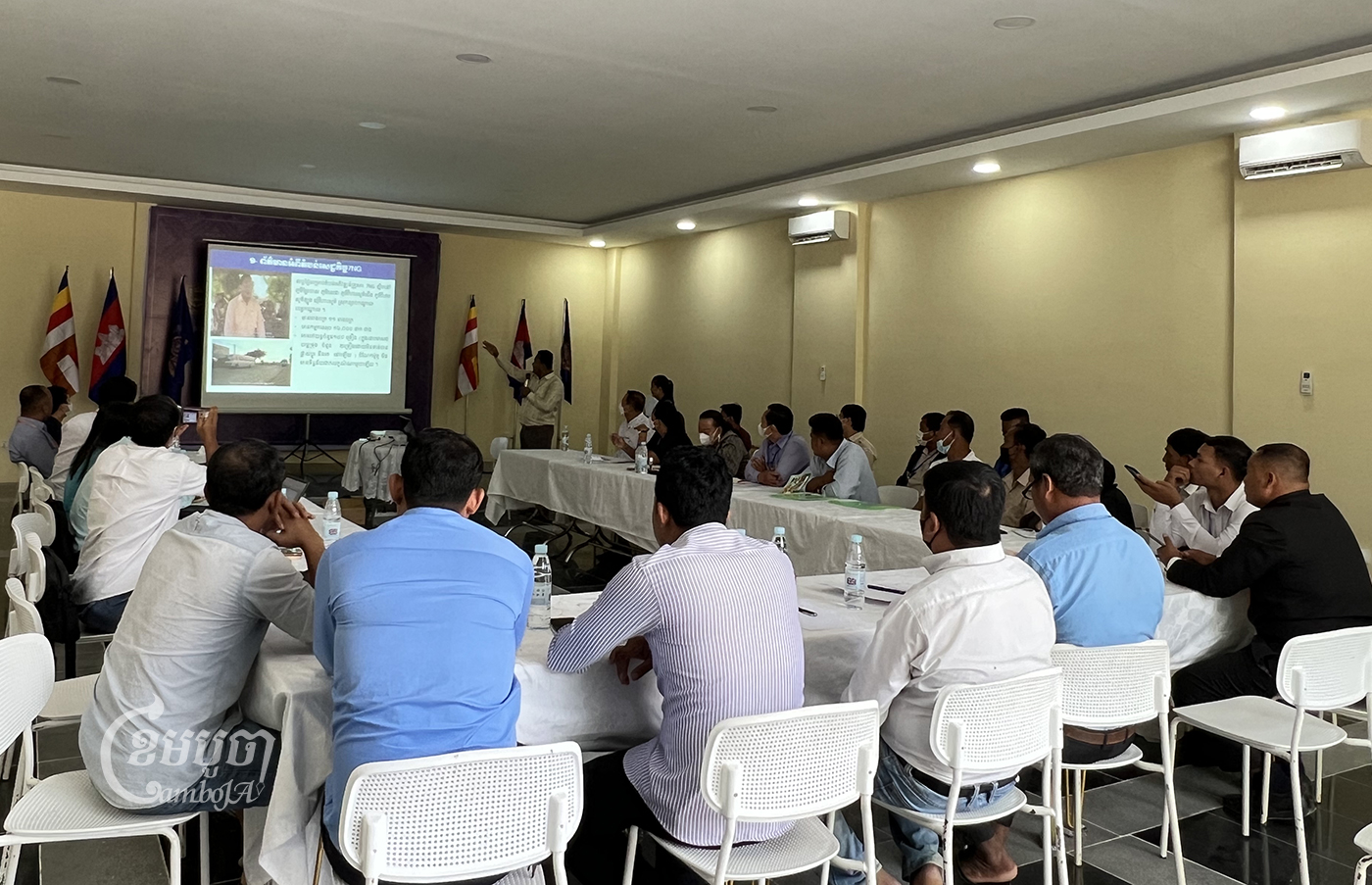
Chuob Kol, president of the Cambodian Youth Power Union at Kandal province’s 7NG shoe, wire and clothes factory, said the Vehicle Replacement Project has helped reduce traffic accidents but acknowledged drivers faced increased debt when purchasing buses without government, NGO, or company subsidies and financial support.
“For those who are bus drivers for the 7NG factory, they have economic problems in their families because at that time they borrowed money from the bank to change the car, but now some have already paid [back the loan],” Kol said.
Upgrading to buses was not the only way to improve worker safety, he added. Drivers could do better to obey traffic laws, he claimed.
“In this area, some drivers did not have much experience, including in their morality, some drink alcohol [in free time], but no matter what we will educate them more,” Kol said.
Sim Bunly, president of Car Association of The Grown Shoe Factory in Kampong Cham, said that the steep costs involved in transitioning from trucks to buses has prevented the majority of drivers from complying with the policy. He estimated 70% of drivers in the province still drove trucks.
The transition to buses also adds to the drivers’ fuel costs during a time when global gas prices have skyrocketed. Poorly maintained roads also risk damaging drivers’ expensive investments in new vehicles, Bunly noted.
“There are many difficult roads so it causes car damage, while changing to the new car is so expensive that drivers could not afford it and there is not much purchasing in factories and gasoline prices are high,” Bunly said.

AIP Foundation’s Cambodia country director Kim Pagna said the NGO was aware of the issues preventing more garment factory drivers from transitioning to buses. Pagna said he was optimistic that these issues could be solved if the government and financial institutions could offer low-interest loans to incentivize drivers to make the change. Otherwise, the government could provide drivers with buses directly, he added.
“There are small, medium and large banks [and microfinance institutions] that offer low interest rates, so I’m thinking about the possibility of encouraging drivers to get loans with low interest rates,” Pagna said. “We will ask the government directly or the Ministry of public work and transportation to share some vehicles to be used in the garment sector.”
Sophanarith, who is also Deputy Director General of the National Social Security Fund (NSSF), said that NSSF is preparing to partner with banks to provide lower interest rates to drivers seeking to transition to buses.
Interest rates vary by institution, but the current average interest rate for vehicle loans from Phnom Penh Commercial bank starts at 9.5% per year, while ACLEDA bank ranges from 12% to 18% annually.
Sophanarith said discussions with potential partners were still in progress and therefore he could not provide further details or a timeline.
“Nowadays the NSSF team is studying to develop greater effectiveness and respond to the concerns of garment sector bus drivers,” Sophanarith said.
For all drivers who have already purchased new buses, the NSSF will request that the Economic Ministry provide them with free annual vehicle checks and an equity card to provide free access to public hospitals. The NSSF will also continue to educate drivers on road safety and improve collection of data regarding traffic accidents, Sophanarith added.
Vy, the Kampong Cham driver, said that the government and relevant organizations like AIP Foundation should reduce interest rates, issue PoorID cards to provide welfare benefits and lower the price of gasoline. He added that bus drivers lack medical certificates to receive subsidized treatment through government facilities, unlike their garment worker passengers.
“Before, it was only eight cans of gasoline, now we run out of 13 cans per month,” Vy said. “I think it would be nice to have a low interest rate so bus drivers are able to repay the bank loan on time and bus drivers also work in the same field as garment workers, so we should have a medical certificate to receive medical treatment from the government too.”

Another driver in Kampong Cham, 35-year-old Kheng Khoeun, was blunt about why he was still unable to comply with the Labor Ministry and NGO initiative to purchase a bus.
“First, I have no money,” he said. “Secondly, the road is difficult for buses to drive on the road. On the other hand, if I borrow money from the bank to buy a new vehicle, I could not earn much because nowadays there is not much work in the garment industry.”
Update: This article has been updated to correct an earlier error which stated 183 garment workers died in road accidents monthly in 2020. In fact, an average of 183 garment workers were involved in road accidents monthly in 2020.


